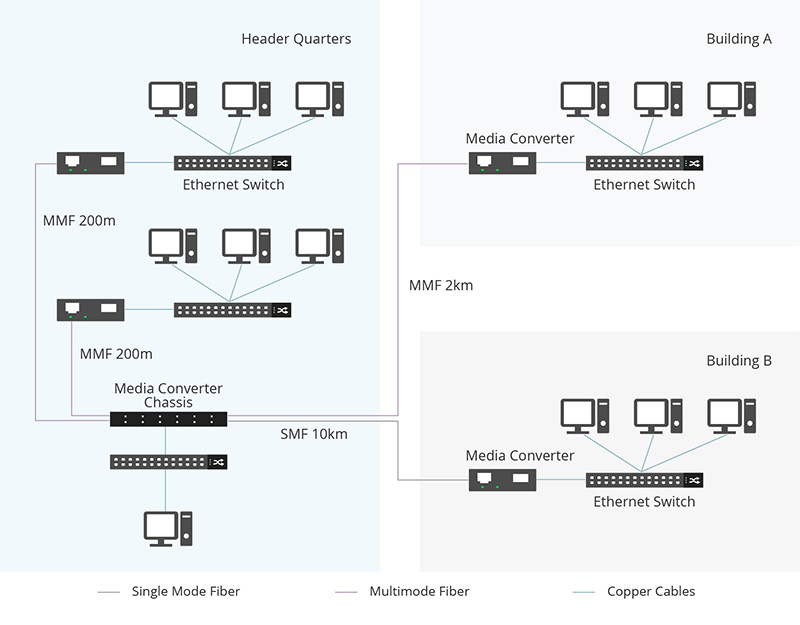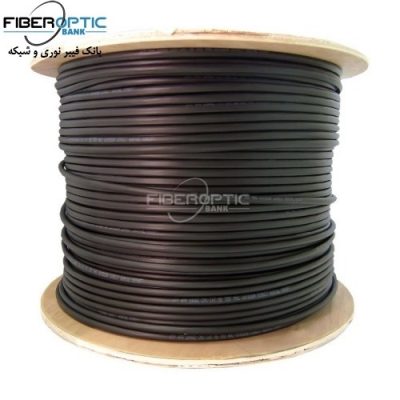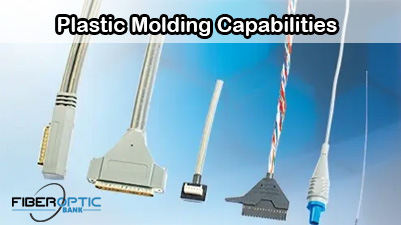Media Converter and choose it
Media converter, also known as fiber media converter, is a device widely used in MAN (metropolitan area network) access and data transport services to enterprise customers for realizing copper-to-fiber or fiber-to-fiber connections. It is a flexible and cost-effective solution for extending transmission distances utilizing the existing cabling infrastructure. With various media converters in the market, how to choose suitable ones? The following is going to introduce common media converter types and application environments, so as to help you make a better choice.
Media Converter and choose it
There are a variety of media converters that support different network protocols, data rates, cabling and connector types.
By Functions
There are unmanaged, managed, PoE, standalone, chassis-based, mini, industrial media converters etc.
Unmanaged vs Managed Media Converter
Unmanaged media converters are plug-and-play, making it easy to install and troubleshoot for newbies. It allows simple communication with other devices but does not have the monitoring and management functions. Unmanaged media converters are good enough for a small company or campus when simple use and management is needed. Managed media converter has the functions of networking monitoring, fault detection and remote management, enabling network administrators to completely control the data, bandwidth and traffic. But they are more costly. For complex environments such as large data centers and enterprise networks, managed media converters are preferable choices for better management, security and reliability.
Non-PoE vs PoE Media Converter
Power-over-Ethernet or PoE media converters achieve reliable and cost-effective fiber distance extension for PoE-powered devices, providing power to network devices over the same copper cable used for data. It can power devices like IP phones, videoconferencing equipment, IP cameras and WiFi devices over copper cabling. Thus it is widely used for connecting security cameras and wireless access points in some inaccessible areas to Gigabit backbone. A case of PoE media converter is shown in the picture below.
Standalone vs Chassis-Based Media Converter
Stand-alone media converters are compact, and easy to deploy, saving lots of costs and space. It is suitable for applications in environments with limited space such as telecommunication cabinets or a distribution box. Chassis-based media converters include a number of independent media converters and a chassis capable of housing a dozen of converters. It is convenient for management when many converters are needed in a large network. Thus they are used in high-density spaces such as data centers or computer rooms.
Commercial vs Industrial Media Converter
Industrial media converters are specially designed for harsh environments, providing highly efficient media conversion in extreme temperatures from -40˚C to 85˚C, high shock and vibration. They are commonly used in building automation, oil and gas drilling and mining, traffic management, weather tracking and other industrial and outdoor applications. While commercial media converters with operating temperature of -10˚C to 55˚C are designed for typical office and data center environments where ambient temperature is controlled.
Standard vs Mini Media Converter
The chips of mini media converters are better than those of standard ones. Its advantages are DIP (dual in-line package) switch functions, which can satisfy different needs. Due to the compact size, mini media converters are much welcomed in large network environments.
By Transmission Media
There are copper to fiber media converters and fiber to fiber media converters, which can be divided further.
Copper to Fiber Media Converter
Copper to fiber media converters enable connections of copper-based Ethernet devices over extended distances via a fiber optic link, which protects data from noise and interference and future-proofs a network with additional bandwidth capacity. Copper to fiber media converter includes Ethernet ones providing connectivity for Ethernet, Fast Ethernet, Gigabit and 10 Gigabit Ethernet devices; TDM (Time Division Multiplexing) ones enabling to extend traditional TDM telecom protocols copper connections; serial-to-fiber ones providing fiber extension for serial protocol copper connections. Copper to fiber media converters are well fitted for point-to-point connections.
Fiber to Fiber Media Converter
Fiber to fiber media converters can provide connectivity between multimode and single mode fiber, dual fiber and single fiber, and support wavelength conversion. Multimode to single mode converters are typically required when lower cost legacy equipment uses MM ports but connectivity is required to SM equipment. Multimode media converter can achieve a transmission distance of 2 km, often deployed in short-distance transmission to extend LANs over fiber cable. While single mode media converter can reach a relatively longer distance from 2 km to 100 km, which is suitable for linking enterprise networks or campus backbones with bandwidth-hungry applications. In the following case, multimode and single mode fiber media converters are deployed to bridge the two buildings and the central data center, spanning 2 km over multimode fiber and 10 km over single mode fiber.
Conclusion
Fiber media converter serves as a cost-effective solution for the connection with both copper and fiber cables in a network. It can largely extend the transmission distances, and is also flexible and easy to use. As there are many types of media converters for different applications, it is better to consider the current and future network requirements before choosing suitable media converters.
Source: community.fs
Related products...
fiber-optic-cable
fiber-optic-cable
fiber-optic-cable


















[ratings]